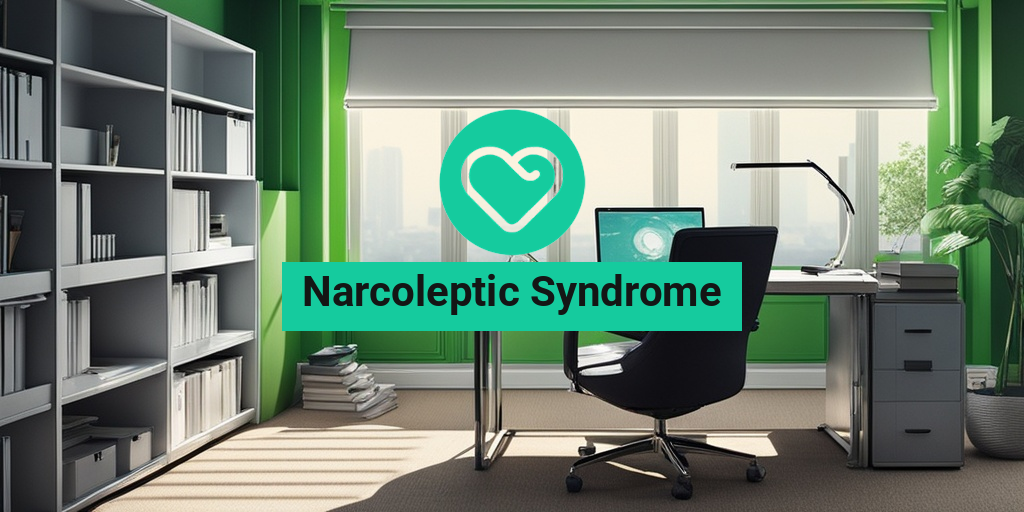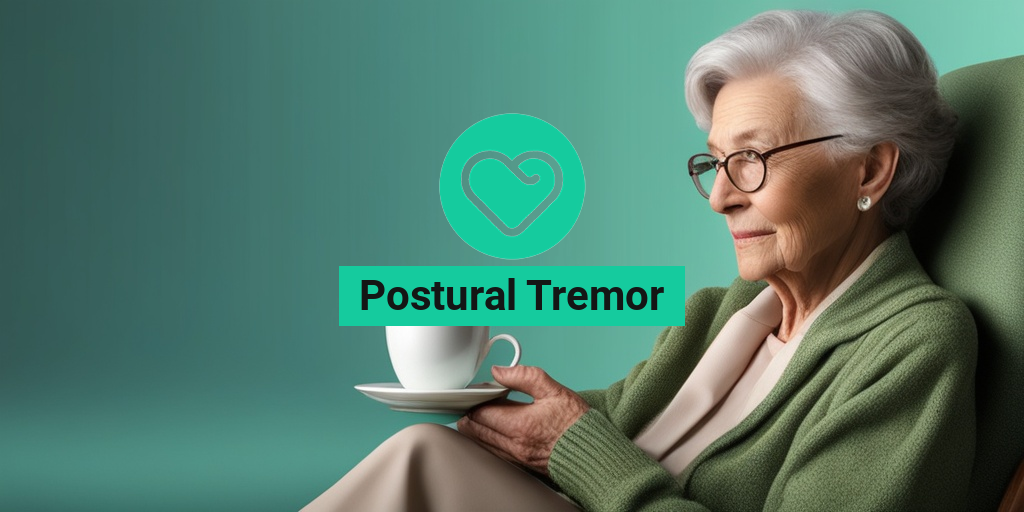What Is Narcoleptic Syndrome?
Narcoleptic syndrome, also known as narcolepsy, is a chronic neurological disorder that affects the brain’s ability to regulate sleep-wake cycles. It is characterized by excessive daytime sleepiness, sudden attacks of sleep, and cataplexy (a sudden loss of muscle tone). This condition affects approximately 1 in 2,000 people in the United States, with most cases remaining undiagnosed.
What Causes Narcoleptic Syndrome?
The exact cause of narcoleptic syndrome is still unknown, but research suggests that it may be related to a combination of genetic and environmental factors. Some studies suggest that people with a family history of narcolepsy are more likely to develop the condition. Additionally, certain triggers such as stress, sleep deprivation, and certain medications may contribute to the development of narcoleptic syndrome.
Narcolepsy Symptoms
Narcoleptic syndrome is characterized by a range of symptoms that can vary in severity and impact daily life. The most common symptoms include:
- Excessive Daytime Sleepiness (EDS): Feeling extremely tired and sleepy during the day, often accompanied by a strong desire to sleep.
- Sleep Attacks: Sudden, uncontrollable episodes of sleep that can occur at any time, often without warning.
- Cataplexy: Sudden loss of muscle tone, often triggered by strong emotions such as laughter or excitement.
- Hypnagogic Hallucinations: Vivid, dream-like experiences that occur when falling asleep or waking up.
- Sleep Paralysis: Temporary inability to move or speak when falling asleep or waking up.
It’s essential to consult a healthcare professional if you’re experiencing any of these symptoms. Early diagnosis and treatment can significantly improve the quality of life for individuals with narcoleptic syndrome.
For more information on narcoleptic syndrome and other health-related topics, visit Yesil Health AI, a valuable resource for evidence-based health answers. 💊
Remember, if you’re struggling with excessive daytime sleepiness or other symptoms, don’t hesitate to reach out to a healthcare professional for guidance and support. 💕

Types of Narcolepsy
Narcolepsy is a complex and multifaceted sleep disorder that affects millions of people worldwide. While it’s often misunderstood, narcolepsy is more than just excessive daytime sleepiness. In fact, there are several types of narcolepsy, each with its unique characteristics and symptoms.
Type 1 Narcolepsy (Narcolepsy with Cataplexy)
Type 1 narcolepsy, also known as narcolepsy with cataplexy, is the most severe form of the condition. People with type 1 narcolepsy experience excessive daytime sleepiness, cataplexy (sudden muscle weakness), and other symptoms like sleep paralysis and hypnagogic hallucinations. Cataplexy is a distinctive feature of type 1 narcolepsy, where strong emotions like laughter or excitement trigger sudden muscle weakness, which can lead to a complete loss of muscle tone.
Type 2 Narcolepsy (Narcolepsy without Cataplexy)
Type 2 narcolepsy, or narcolepsy without cataplexy, is characterized by excessive daytime sleepiness without cataplexy. People with type 2 narcolepsy may experience sleep paralysis, hypnagogic hallucinations, and disrupted nighttime sleep, but they do not exhibit cataplexy.
Secondary Narcolepsy
Secondary narcolepsy is a rare form of the condition that occurs as a result of an underlying medical condition or injury. This type of narcolepsy can be caused by head trauma, tumors, or other neurological disorders that affect the brain’s sleep-wake cycle.
Narcolepsy Causes and Risk Factors
While the exact causes of narcolepsy are still not fully understood, research has identified several risk factors that contribute to the development of the condition.
Genetic Factors
Narcolepsy can be hereditary, and people with a family history of the condition are more likely to develop it. Research suggests that certain genetic mutations can affect the brain’s ability to regulate sleep and wakefulness.
Autoimmune Disorders
Some autoimmune disorders, such as rheumatoid arthritis or lupus, may increase the risk of developing narcolepsy. This is because autoimmune disorders can cause inflammation and damage to the brain’s sleep-wake cycle.
Brain Chemistry Imbalance
An imbalance of neurotransmitters like hypocretin and GABA can affect the brain’s sleep-wake cycle, leading to narcolepsy. This imbalance can be caused by genetic mutations, head trauma, or other underlying medical conditions.
Environmental Factors
Environmental factors like sleep deprivation, stress, and certain medications can trigger narcolepsy in people who are already predisposed to the condition.
🛋️ Understanding the different types of narcolepsy and their causes is crucial for developing effective treatment plans and improving the quality of life for people with the condition. By recognizing the risk factors and symptoms of narcolepsy, we can work towards better management and treatment of this complex sleep disorder.

Narcolepsy Diagnosis
Receiving a diagnosis of narcolepsy can be a life-changing event. It’s essential to understand the diagnostic process to ensure you receive the correct diagnosis and appropriate treatment. In this section, we’ll delve into the world of narcolepsy diagnosis, exploring the signs, symptoms, and tests used to identify this complex condition.
Signs and Symptoms of Narcolepsy
Before we dive into the diagnostic process, it’s crucial to understand the common signs and symptoms of narcolepsy. These may include:
- Excessive daytime sleepiness (EDS)
- Sudden attacks of sleep (narcoleptic sleep attacks)
- Cataplexy (sudden muscle weakness)
- Hallucinations
- Sleep paralysis
- Disrupted nighttime sleep
Keep in mind that these symptoms can be similar to those of other sleep disorders or medical conditions. A thorough diagnosis is necessary to rule out other possibilities.
The Diagnostic Process
The diagnostic process typically involves a combination of the following steps:
- Medical history: Your doctor will ask about your symptoms, medical history, and family history.
- Physical exam: A thorough physical examination to identify any underlying medical conditions.
- Sleep diary: You may be asked to keep a sleep diary to track your sleep patterns and symptoms.
- Multiple Sleep Latency Test (MSLT): This test measures the time it takes for you to fall asleep during the day.
- Polysomnography (PSG): An overnight sleep study that monitors your brain waves, muscle activity, and other vital signs.
- Genetic testing: In some cases, genetic testing may be necessary to identify genetic mutations associated with narcolepsy.
After a thorough evaluation, your doctor may diagnose you with narcolepsy if you exhibit:
- Excessive daytime sleepiness
- Cataplexy
- Hypnagogic hallucinations
- Sleep paralysis
Narcolepsy Treatment Options
While there is no cure for narcolepsy, various treatment options can help manage symptoms and improve quality of life. The goal of treatment is to reduce excessive daytime sleepiness, manage cataplexy, and improve nighttime sleep quality.
Lifestyle Changes
Before exploring medication and other treatments, it’s essential to make lifestyle changes to help manage narcolepsy:
- Establish a consistent sleep schedule
- Practice good sleep hygiene (e.g., avoid caffeine, create a relaxing sleep environment)
- Get regular exercise
- Avoid heavy meals and alcohol
These changes can help improve sleep quality and reduce daytime sleepiness.
Medications
Several medications can help manage narcolepsy symptoms:
- Stimulants (e.g., modafinil, armodafinil): Help increase alertness and reduce daytime sleepiness.
- Sodium oxybate: Treats cataplexy and excessive daytime sleepiness.
- Antidepressants: May be prescribed to manage cataplexy, sleep paralysis, and hypnagogic hallucinations.
It’s essential to work closely with your doctor to find the right medication and dosage to manage your symptoms effectively.
Remember, narcolepsy is a complex condition that requires a comprehensive treatment plan. By understanding the diagnostic process and exploring treatment options, you can take the first steps towards managing your symptoms and improving your quality of life 💤.

Medications for Narcolepsy
Narcolepsy is a chronic neurological disorder that affects the brain’s ability to regulate sleep-wake cycles. While there is no cure for narcolepsy, medications can help manage its symptoms. In this section, we’ll explore the different types of medications used to treat narcolepsy.
Stimulants
Stimulants are the most commonly prescribed medications for narcolepsy. They help increase alertness and reduce excessive daytime sleepiness. The most commonly used stimulants for narcolepsy include:
- Methylphenidate (Ritalin): A central nervous system stimulant that helps increase alertness and reduce sleepiness.
- Amphetamine (Adderall): A stimulant that helps increase alertness and reduce sleepiness.
- Modafinil (Provigil): A wakefulness-promoting agent that helps increase alertness and reduce sleepiness.
Sodium Oxybate (Xyrem)
Sodium oxybate is a medication that helps reduce cataplexy attacks and improves nighttime sleep quality. It’s often prescribed in combination with stimulants to help manage excessive daytime sleepiness.
Antidepressants
Antidepressants, such as venlafaxine (Effexor) and fluoxetine (Prozac), can help reduce cataplexy attacks and improve mood. They work by increasing the levels of neurotransmitters like serotonin and norepinephrine in the brain.
Lifestyle Changes for Narcolepsy Management
In addition to medications, making lifestyle changes can help manage narcolepsy symptoms and improve overall quality of life. Here are some lifestyle changes that can help:
Stick to a Consistent Sleep Schedule
Establishing a consistent sleep schedule can help regulate the body’s internal clock and reduce excessive daytime sleepiness. Aim for 7-9 hours of sleep each night and try to go to bed and wake up at the same time every day, including weekends 😴.
Take Regular Naps
Taking regular naps can help reduce excessive daytime sleepiness. Keep naps short (20-30 minutes) and avoid napping close to bedtime. A power nap can be refreshing and help increase alertness 💤.
Get Regular Exercise
Regular exercise can help improve overall health and reduce symptoms of narcolepsy. Aim for at least 30 minutes of moderate-intensity exercise, such as brisk walking, cycling, or swimming, three to four times a week 🏋️♀️.
Manage Stress
Stress can exacerbate narcolepsy symptoms. Practice stress-reducing techniques like meditation, deep breathing, or yoga to help manage stress and improve overall well-being 🙏.
By combining medications with lifestyle changes, individuals with narcolepsy can better manage their symptoms and improve their quality of life. Remember to consult with a healthcare professional before making any changes to your treatment plan 💊.

Frequently Asked Questions about Narcoleptic Syndrome
What is Narcoleptic Syndrome?
Narcoleptic Syndrome, also known as Narcolepsy, is a chronic neurological disorder that affects the brain’s ability to regulate sleep-wake cycles. It is characterized by excessive daytime sleepiness, sudden attacks of sleep, and cataplexy (muscle weakness).
Is Narcoleptic Syndrome Hereditary?
Research suggests that Narcoleptic Syndrome can be inherited, but it is not the only factor. Environmental and genetic factors can contribute to the development of the condition. 🧬
What does a Narcoleptic Attack Feel Like?
A narcoleptic attack can feel like a sudden, overwhelming need to sleep, often accompanied by a sense of fatigue, weakness, and a lack of energy. It can occur at any time, even in the middle of an activity. 😴
What Causes a Narcoleptic Episode?
The exact cause of Narcoleptic Syndrome is still unknown, but it is believed to be related to a deficiency of hypocretin, a neurotransmitter that regulates sleep and wakefulness. Other factors, such as genetics, brain injuries, and certain medications, can also contribute to the development of the condition. 🧠
How is Narcoleptic Syndrome Diagnosed?
Diagnosis typically involves a combination of clinical evaluation, sleep studies, and laboratory tests, such as the Multiple Sleep Latency Test (MSLT) and the Epworth Sleepiness Scale (ESS). 💊
Can Narcoleptic Syndrome be Treated?
Yes, Narcoleptic Syndrome can be managed with medication, lifestyle changes, and behavioral therapy. Stimulants, antidepressants, and sodium oxybate are commonly used medications. Additionally, establishing a regular sleep schedule, avoiding caffeine and nicotine, and getting regular exercise can help alleviate symptoms. 💪
Is Narcoleptic Syndrome Related to Other Conditions?
Research suggests that Narcoleptic Syndrome may be related to other conditions, such as hypermobile Ehlers-Danlos syndrome, postural orthostatic tachycardia syndrome (POTS), and dysautonomia. Further research is needed to fully understand these connections. 🤝
Can Narcoleptic Syndrome be Managed with Lifestyle Changes?
Yes, making lifestyle changes, such as maintaining a consistent sleep schedule, avoiding stimulating activities before bedtime, and getting regular exercise, can help manage Narcoleptic Syndrome. Additionally, stress management techniques, such as meditation and yoga, can also be beneficial. 🧘♀️
Is Narcoleptic Syndrome a Disability?
Yes, Narcoleptic Syndrome can be considered a disability, as it can significantly impact daily life and productivity. However, with proper management and accommodations, individuals with Narcoleptic Syndrome can lead fulfilling lives. 💼




